Primary care logo
Our research shows that people find it helpful and reassuring when they see the NHS Identity applied to primary care services. Therefore, whilst primary care contractors are not contractually required to use the NHS Identity, they are encouraged to do so to raise awareness of the NHS services they provide and to signpost patients and the public to them. The exception is pharmacies, which are required to include the NHS logo in their practice leaflets.
Patients and the public see the NHS as a single, national, unified service and expect and want the NHS Identity to be applied in a consistent and uniform way – it reassures them that they can rely on the quality of healthcare being provided wherever they access it. Therefore, a single NHS primary care logo has been developed for all primary care contractors to use.
These guidelines are for primary care contractors who are commissioned under a primary care contract. Contractors commissioned under the NHS Standard Contract should follow the Identity guidelines for third party providers of NHS services.
The NHS primary care logo is made up of two elements:
- the NHS logo, which is instantly recognised and evokes positive, rational and emotional associations of trust, confidence, security and a sense of dependability
- a descriptor line – ‘Providing NHS services’ – which indicates that some, but not necessarily all of the services available from a primary care contractor are NHS funded.
The NHS logo, which forms part of the NHS primary care logo, is protected by law. It is a UK trade mark owned by the Secretary of State for Health and Social Care. It is also protected by copyright. Only original artwork files for the NHS primary care logo should be used. You should not attempt to recreate it yourself. The NHS primary care logo must always be used in its entirety. The NHS logo must not be used on its own.
Leaving clear space around the NHS primary care logo
It is important to leave clear space around the NHS primary care logo – at least as much as the height of the NHS logo being used.
Clear area around the logo is at least the height of the NHS lozenge.
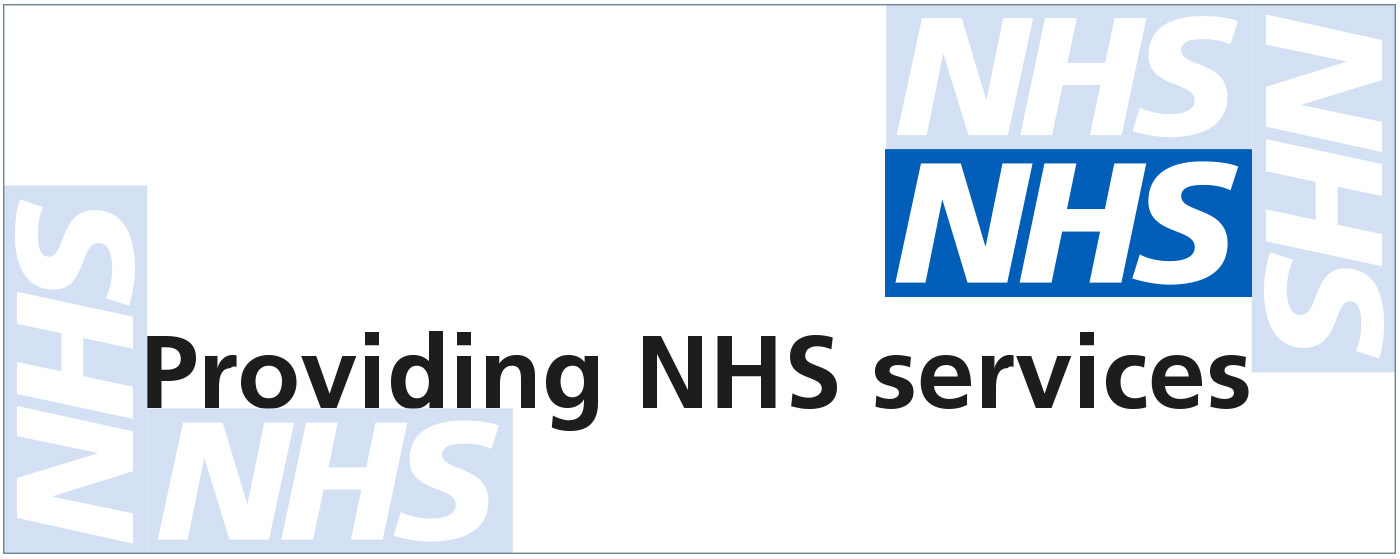
The NHS primary care logo on coloured backgrounds
To see how the NHS primary care logo should be applied to coloured backgrounds, please follow the guidelines for the use of NHS organisational logos on coloured backgrounds.
The primary care logo is designed to work best against NHS core colour backgrounds, such as white, pale grey or pale blue. However, it can be shown on other coloured backgrounds as long as all parts of the primary care logo are clear and legible. The NHS Blue of the logo needs to stand out against the background colour and the text needs to appear in its original format of black. If this isn’t possible, the logos need to appear on a white banner or box.
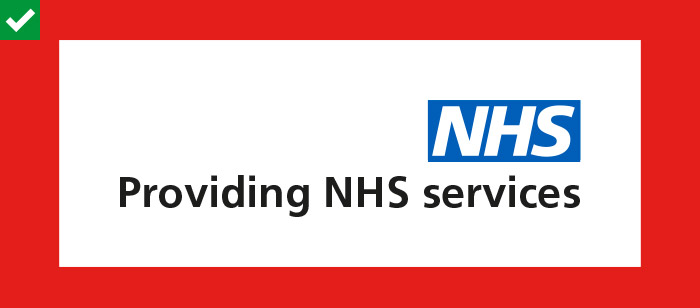
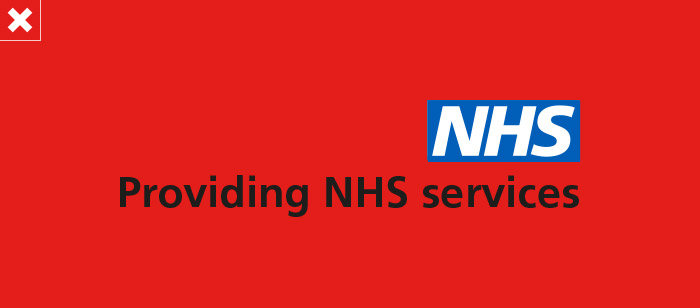
The position and size of the NHS primary care logo
Ideally, the NHS primary care logo should be positioned in the top right on information relating to the NHS services you provide, and on materials used to signpost patients and the public to them. This is where patients and the public expect to see the NHS logo. However, we appreciate this will not always be possible, if for example, your own logo appears in the top right position. On websites, the NHS primary care logo should not appear in the top banner, as this would mean it would appear on all pages, rather than those which are solely about NHS services.
The NHS primary care logo should always be large enough to be clearly visible to patients and the public. However, it should never be larger than your own logo if you have one. It needs to be proportionate to show that some, but not necessarily all, of the services you provide are NHS funded. To ensure the descriptor line is legible, you should generally follow the guidelines on the relative sizing of the NHS organisational logo.
One NHS logo on a page
There should never be more than one NHS logo on a page.
Where you can use the NHS primary care logo
The NHS primary care logo can only be used on information relating to the NHS services you provide, and to signpost patients and the public to them. Applications include, but are not limited to:
- Signage, facias and window vinyls.
- Stationery (e.g. letters, envelopes) – for communications which are about your NHS services. On envelopes, the NHS primary care logo will need to go bottom right as the stamp or franking will need to go top right.
- Leaflets and posters – which are about your NHS services.
- Appointment cards.
- Prescription labels and bags – due to the size of prescription labels, this is the only application where the NHS logo can be used on its own, if the NHS primary care logo won’t fit with the lettering at a legible size. Please see the guidance on NHS logo for relative sizing.
- Name badges – for staff who primarily deliver NHS services.
- Uniforms – for staff who primarily deliver NHS services.
- Vehicles – you can use a permanent sign provided they are only used for your NHS service. If your vehicles have multiple uses, you should use temporary signage.
- Websites – the NHS primary care logo can be used on the homepage of your website to link to those webpages which are solely about your NHS services, which can also carry the NHS primary care logo.
- Recruitment advertising – for staff who will primarily be delivering NHS services.
Here are some examples of how the NHS primary care logo can be used on the applications listed above. See the Identity examples section for the full range of visual examples.
Fascia application
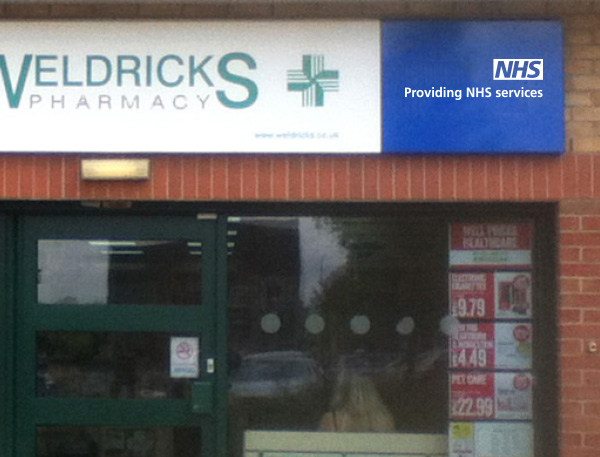
Window sticker
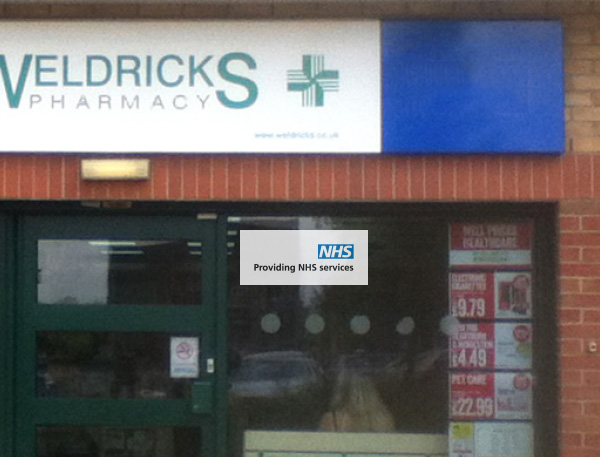
On leaflets about NHS services (shown here on A5 & A4 leaflets)

Primary care logo on website
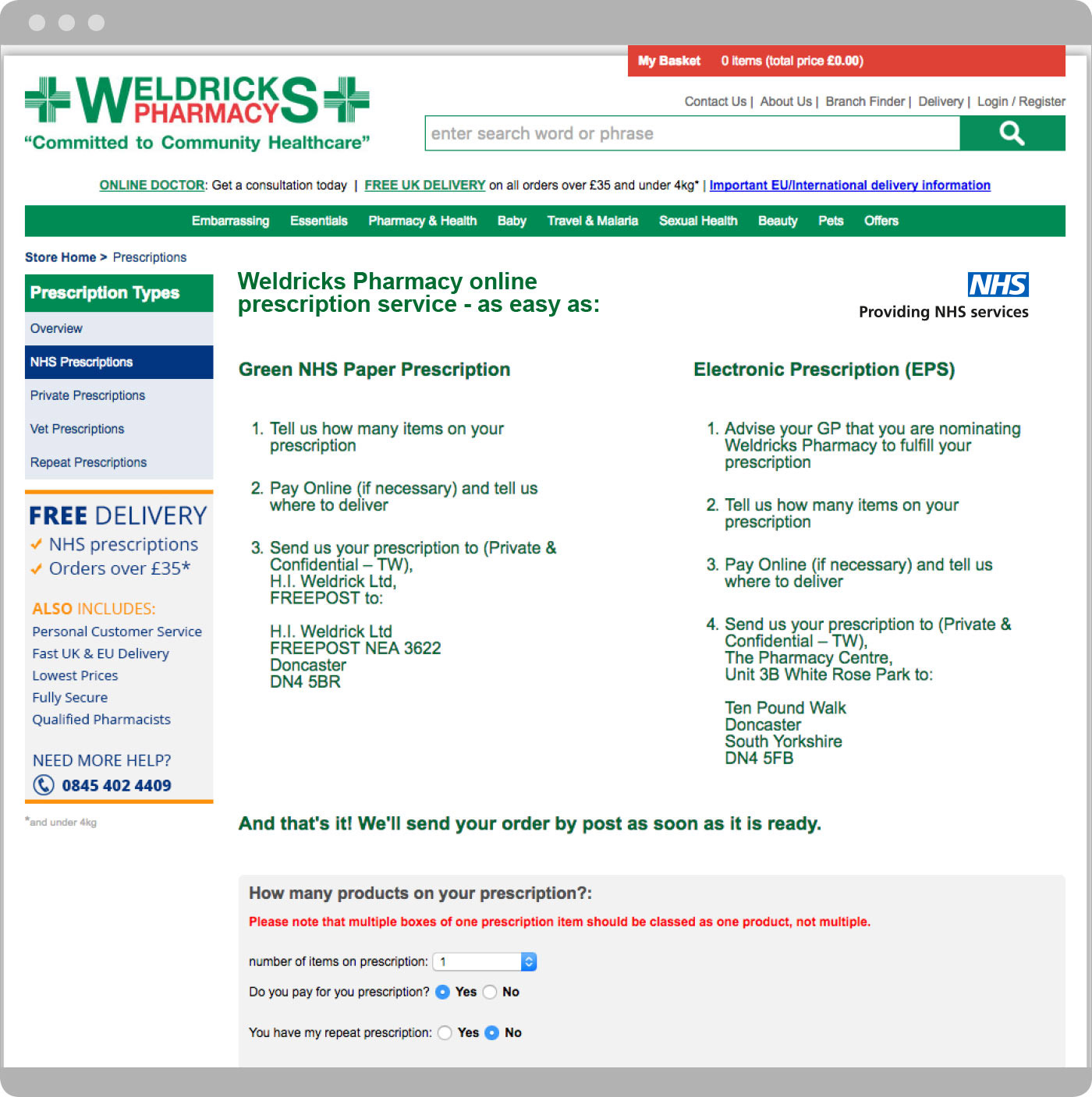
How you can use the NHS primary care logo
Inappropriate or irresponsible use of the NHS Identity concerns patients and the public and can damage the NHS’s reputation. Please follow the do’s and don’ts below, when using the NHS primary care logo on information relating to the NHS services you provide. Queries regarding the content of patient information about your NHS services should be directed to your NHS commissioner.
Do:
- Only use the NHS primary care logo on information relating to the NHS services you provide, and to signpost patients and the public to them.
- Use the NHS primary care logo in proportion to the amount of NHS services you provide, compared to your other private (i.e. non-NHS funded) products and services.
- Make it clear who is eligible for NHS funded services (e.g. NHS flu jabs, NHS eye tests, NHS home eye tests).
- Make it clear that people have a choice over the GP, pharmacy, dentist and optician they choose to use.
- Follow applicable laws and industry codes of practice for promotional activity when communicating about the NHS services you provide.
Don’t:
- Use the NHS primary care logo to cross-sell or up-sell the other private (i.e. non-NHS funded) products and services you provide.
- Use the word ‘free’ irresponsibly in relation to NHS services. Whilst there may be no cost to the individual receiving the NHS service, there is still a cost to the NHS. The word ‘free’ should not be used in a way which encourages unnecessary use of NHS services.
- Mislead patients and the public in communications about NHS primary care services through inaccuracy, ambiguity, exaggeration, omission or otherwise. For example, envelopes for direct mail promoting NHS services can carry the NHS primary care logo bottom right, but should also carry your name/logo. The envelopes should not include phrases such as ‘Private and confidential’, ‘Addressee only’, ‘Contains important information’ etc. as these phrases could mislead patients or cause concern. For example, people might be expecting appointment letters for important tests or treatment or be waiting for vital test results.
- Undermine the reputation of other primary care contractors in your communications about the NHS services.